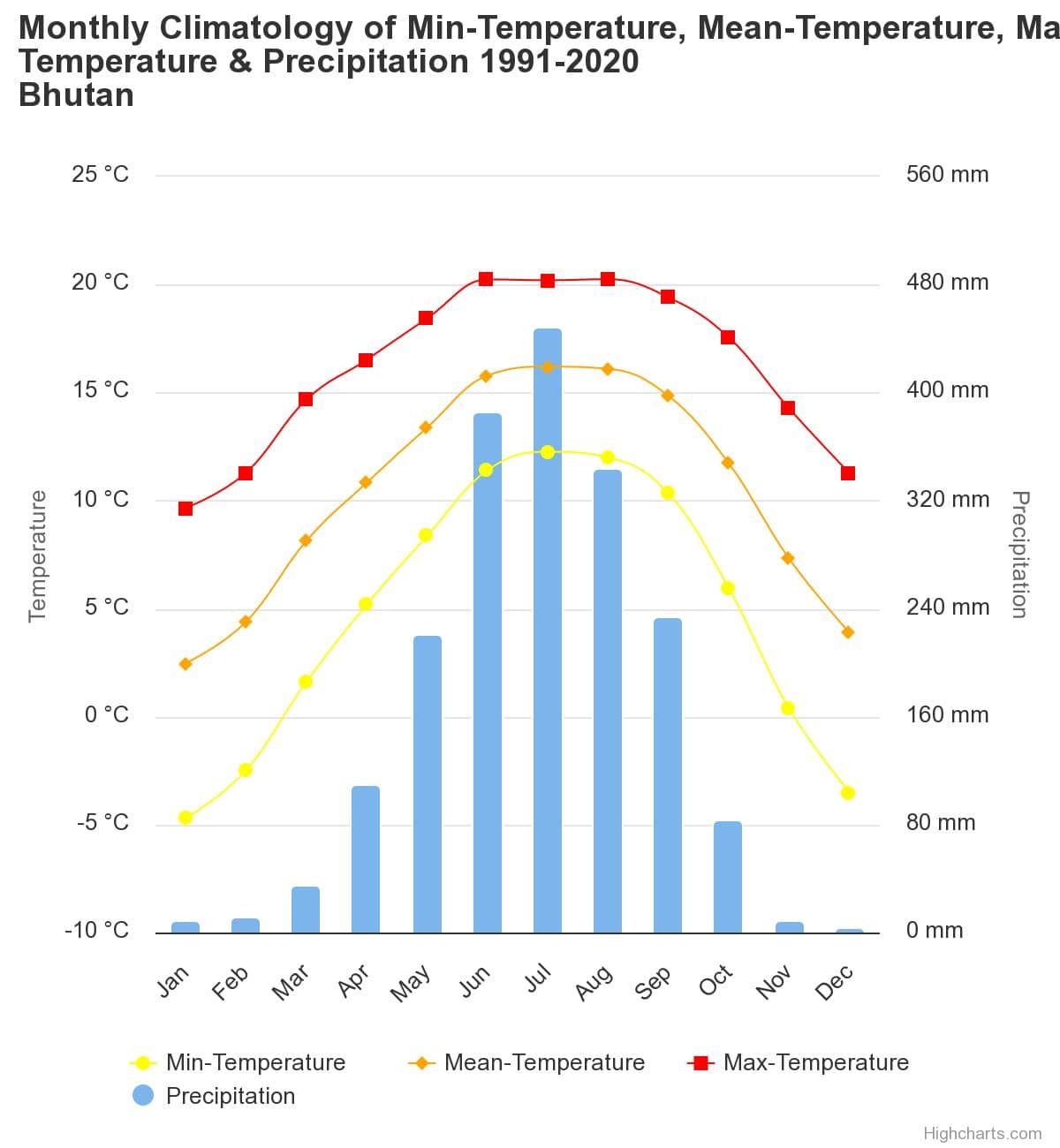- Nepal Adventure Trekking & Tour Operator
 Like India, Bhutan's monsoons impact its climate, which varies with altitude. Western Bhutan experiences heavy monsoon rains, contributing to 60–90% of the region's annual rainfall. The climate ranges from humid and subtropical in the southern plains to temperate in the inner Himalayan valleys and cold, with year-round snow in the north.
Like India, Bhutan's monsoons impact its climate, which varies with altitude. Western Bhutan experiences heavy monsoon rains, contributing to 60–90% of the region's annual rainfall. The climate ranges from humid and subtropical in the southern plains to temperate in the inner Himalayan valleys and cold, with year-round snow in the north.
The temperature changes with elevation. In Thimphu (at 2,200 meters or 7,218 feet), it's 15–26°C (59–78.8°F) during the monsoon (June–September) but drops to -4–16°C (24.8–60.8°F) in January. The central parts have a fantastic, temperate climate, while the south is hot and humid (15–30 °C or 59–86 °F year-round, occasionally hitting 40°C or 104°F in summer).
Annual precipitation varies widely: the north is arid (about 40mm or 1.6 inches), mainly snow; the central region receives around 1,000mm (39.4 inches); the humid south gets up to 7,800mm (307.1 inches), supporting lush forests. Thimphu has dry winters (December–February) with minimal precipitation, followed by increasing rainfall, peaking at 220mm (8.7 inches) in August and totaling nearly 650mm (25.6 inches) annually.
Bhutan experiences a dry spring from early March to mid-April, transitioning to summer with occasional showers. The monsoon from late June to late September brings heavy rain, high humidity, floods, and landslides due to the Himalayas blocking its northward movement.
From late September to late November, autumn offers bright, sunny days and early snowfall at higher elevations. Winter (late November–March) brings frost and frequent snowfall above 3,000 meters (9,843 feet), accompanied by gale-force winds from the winter northeast monsoon.